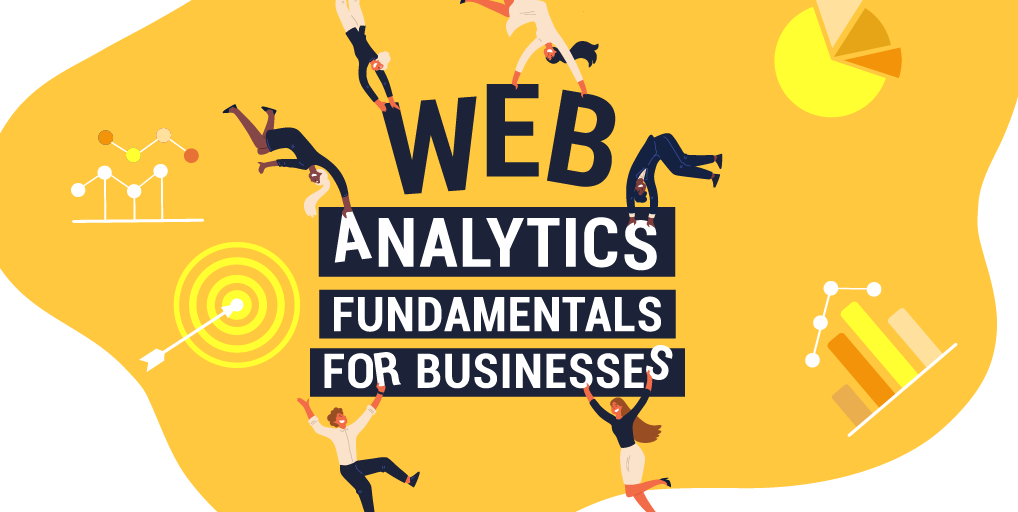The digital times we’re living in are marked by hyper-connectivity, where people communicate with others through intelligently complex systems of machines and devices. These range from phone to email, instant messaging, web platforms, and just about anything that’s capable of exchanging information within a network.
This state of interconnectedness is poised to grow exponentially such that by 2020, it’s estimated that the number of connected devices all over the world will have reached 32 billion. Apart from enabling communication and connectivity, technologies are also generating innumerable sets of data each time someone uses the web to search Google, consume content, or sign up for something, among other online activities.
Consequently, that leaves you with data that you can use to advance your business goals. Although there are some concerns surrounding the ethical use of customer data, you need to learn to leverage data in such a way that it will help you get to know and serve your customers better. Data offers a lot of value for your business because you can use it to study the intent/motivations of your target audience, then align your products or services based on the insights you got from your data. The key is to harness your data analytics capability, starting off with your web analytics.
The Importance of Web Analytics
Businesses are always competing for consumers’ attention, and doing so is easier when you utilize data to analyze your marketing efforts. Marketing data can be a growth driver for your business as it helps you target consumers with the right content or message using appropriate channels. Ultimately, this will result in increased brand awareness, more conversions, and a better return on investment.
One of the key aspects of your marketing data is web analytics, which involves the collection, measurement, analysis, and reporting of data that you have on your website.
Web analytics gives you a better understanding of how web users are engaging with your site since it holds information regarding the number of visitors to your site, what pages they are viewing, and so on. Among many other things, web analytics is also concerned with pinpointing how users got to your site, so you’ll know if you’re directing your marketing budget to the right platforms.
Over time, you can track and monitor these metrics to measure your website’s performance and bring about a positive user experience. Ideally, you should tweak your web optimization strategies until you come up with the right combination of techniques that matches users’ shopping habits or buying preferences.

How Digital Data Works for Your Brand
In a lot of ways, your website serves as the hub of your marketing efforts. You can use your website to distribute content, promote specific products and services to customers, communicate your brand’s story, and more.
Here are the basic web analytics components based on the type of data you should be tracking and how you can use them to improve your online marketing efforts:
-
User Analytics
This has a lot to do with knowing who your site visitors are in order for you to give them the best user experience possible. When you have data about their age, gender, or location, it’s easier for you to incorporate features you think they will need to help them navigate through your site.
For example, you can better deal with potential problems in language usage if you know where your users are located geographically. With this data, you can provide an option for your site’s visitors to use content translated in their own language.
This part of web analytics can also tell you the type of device that visitors typically use to access your site. If most of them are mobile device users, it might be advantageous for you to optimize your site for mobile viewing or spend more on mobile advertising.
-
Content Analytics
You can identify your low- and high-performing content with this metric. It goes without saying that your best content will get the most views, likes, shares, mentions, and other engagement signals. You can then analyze what topics are most attractive for users, what type of keywords, CTAs, and headlines work, and even how the layout or design affects your content creation plans.
You can also identify which specific audiences are engaging with your content: are they average content consumers, or are they looking for very technical and thorough information from your content?
From these insights, you can focus on creating enhanced content that’s tailored to your target market, helping you steer clear of misallocated resources and instead drive higher audience engagement for your site.
-
Behavioral Analytics
Since every visitor on your site leaves a digital footprint, you have numerous opportunities to look for patterns in the way that visitors are using your site or what they’re using it for—whether their purpose is to get in touch with you, check your offerings, make a purchase, share their experiences with your business, and so on.
Through behavioral analytics, you can track which pages on your site are performing and therefore should be optimized. It will also pinpoint on which pages they’re spending the most or the least of their time. It could be that users are filling their shopping carts but once they get to the checkout page, they choose to abandon their cart because they have to fill out a lengthy checkout form.
The focus is on the series of events that show how users interacted on your site until they decided to buy or sign up for your product or service, or otherwise.
All things considered, your end goal in behavioral analytics is to be able to offer a smooth and seamless website experience for visitors through a user-friendly interface, clear navigational flow, fast-loading web pages, and the like.
-
Traffic Analytics
Traffic analytics lets you track which third party site or platform directed the highest traffic to your site, so you can boost your marketing efforts in that channel. If you’re doing both search engine optimization (SEO) and display ad campaigns but notice that your site traffic is mostly organic, then you’d do better to increase your budget in this department instead of paying for more space to run your ads.
Meanwhile, your social media reach can also be a good indicator and driver of your web traffic. Perhaps someone found your brand on LinkedIn, Facebook, or Twitter and visited your site or your blog afterward; in such case, make sure that you leverage these platforms for content and social marketing moving forward.
-
Acquisition Analytics
Unlike traffic analytics—where the focus is on the source of traffic—acquisition analytics shows you whether those traffic sources are helping you acquire leads or customers for your site. If visitors from sites that link to your website download your content or install your app, it’s a good indication that those sites are giving you high quality traffic that converts, which can serve as sales leads for the company in the future.
Conversely speaking, you may be getting a lot of traffic from other sources, but if they’re not adding any value or generating revenue for your business, you might need to rethink your marketing efforts so you don’t spend unnecessarily on campaigns that don’t produce significant results.
Data and Web Analytics in Business
At the rate that data is growing, you need to be proactive in harnessing its value for your business. To make this happen, you should regularly track and analyze your data by incorporating web analytics in your overall marketing strategy. Underneath your website, you’ll find a minefield of information about your users, traffic, content performance, and other key indicators.
Thankfully, there’s a whole gamut of web analytics tools, platforms, and services that makes it easy for you to evaluate your website’s structure and performance. By tracking all the important data you need, you can then make informed decisions on how to make your website more efficient and useful for online users.






